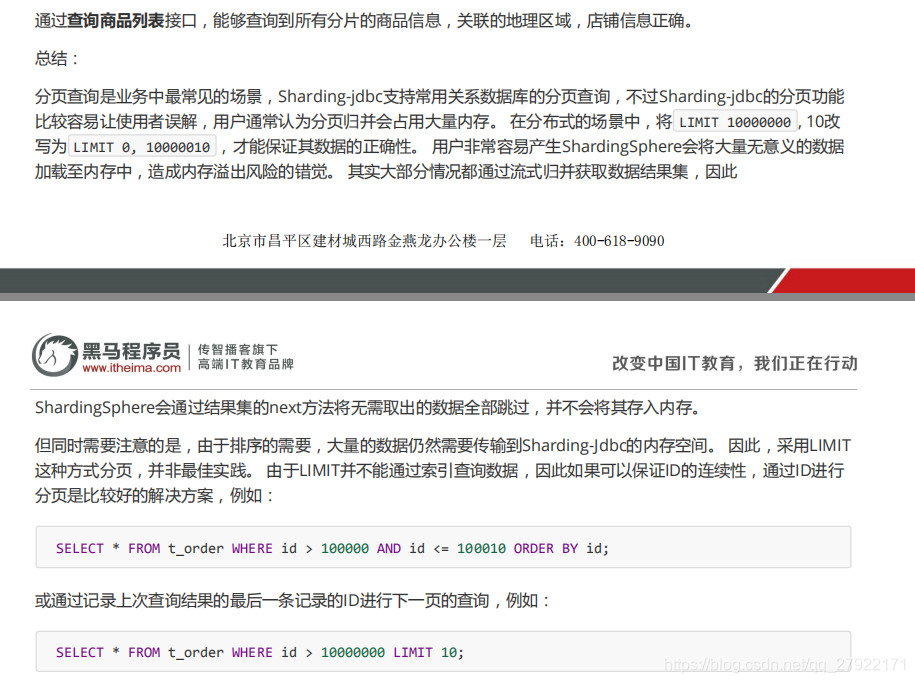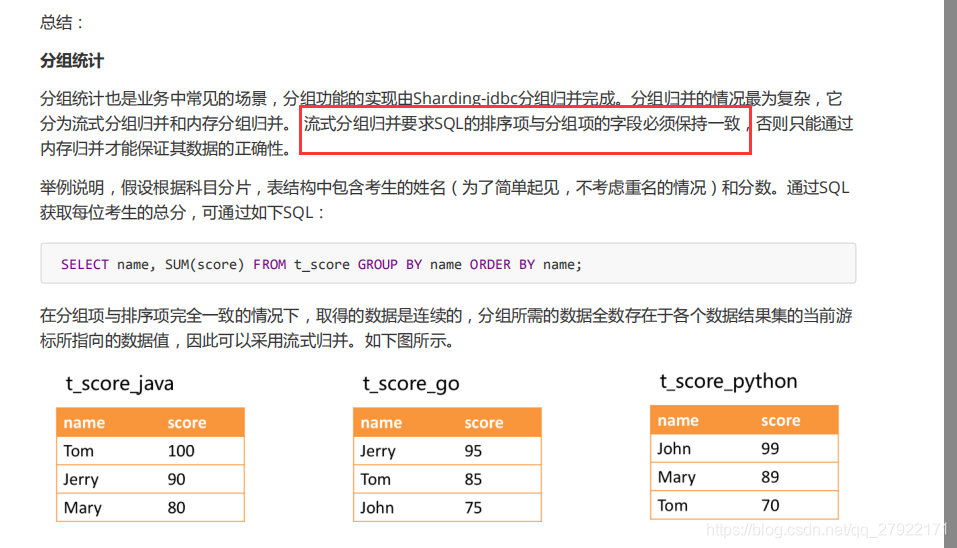分库分表
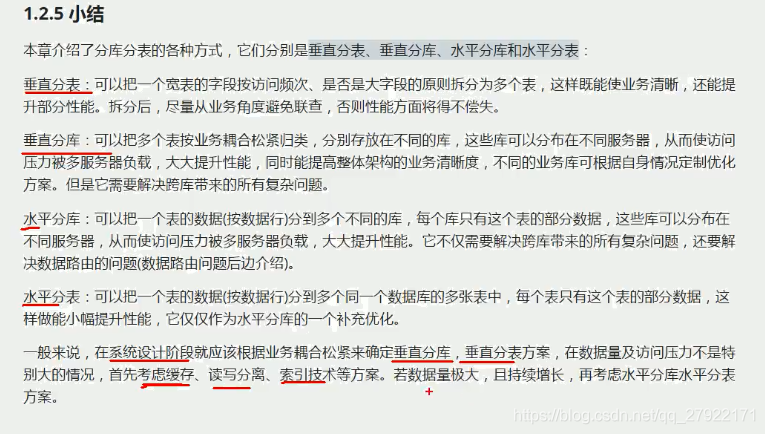
分库分表带来的问题

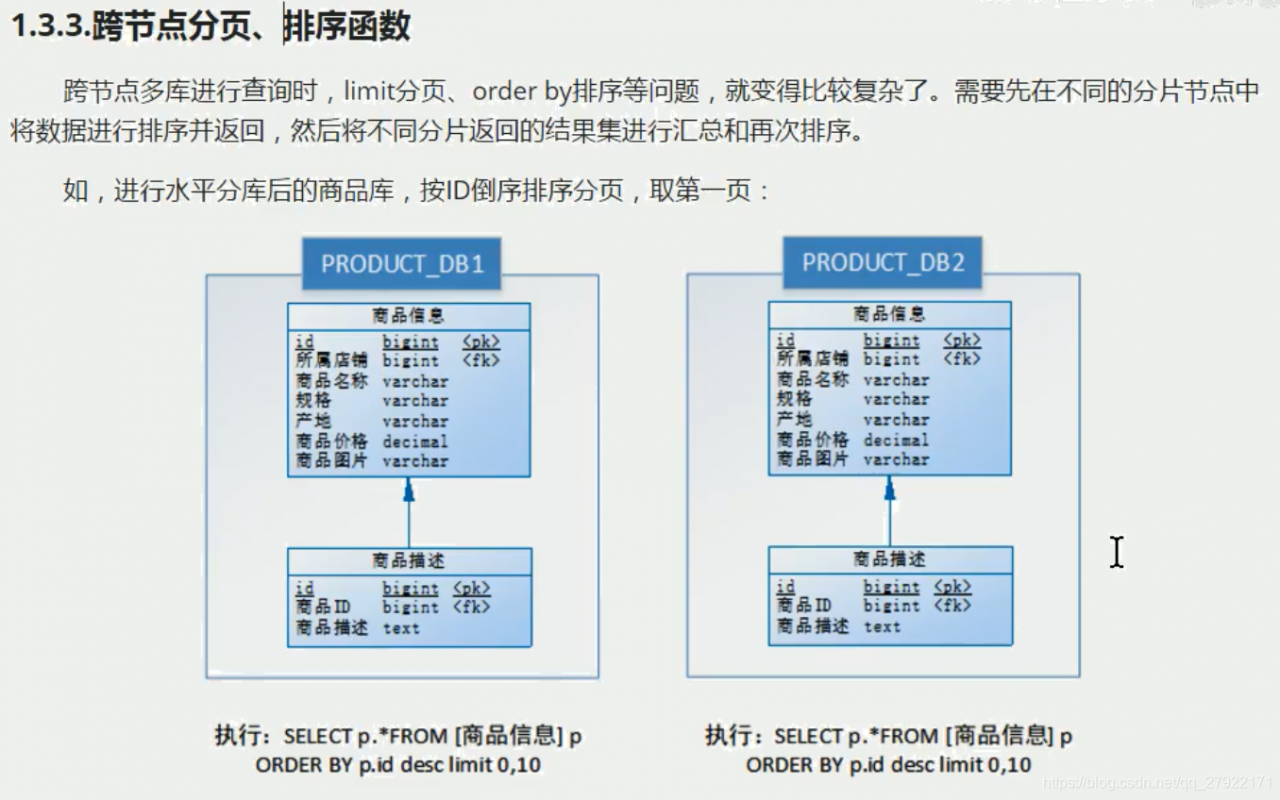
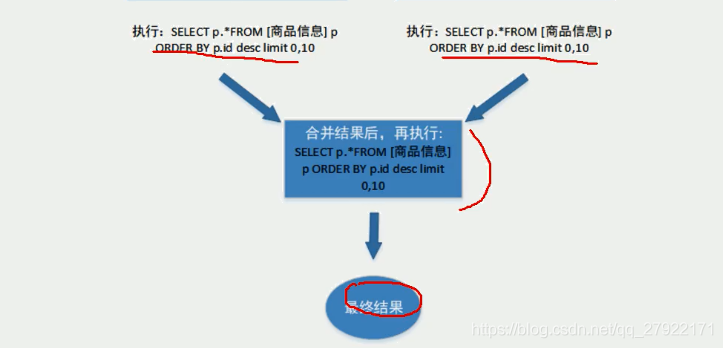

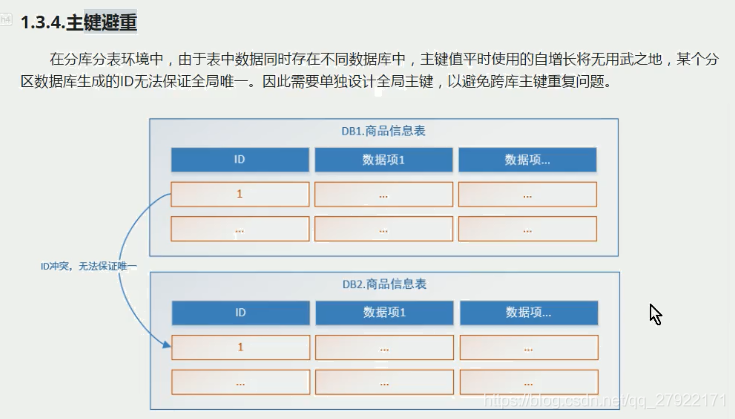

sharding-jdbc
sharding-jdbc要解决的就是分库分表带来的问题(即分库分表已经被分好了,sharding-jdbc是为了更好操作的一种解决方案)
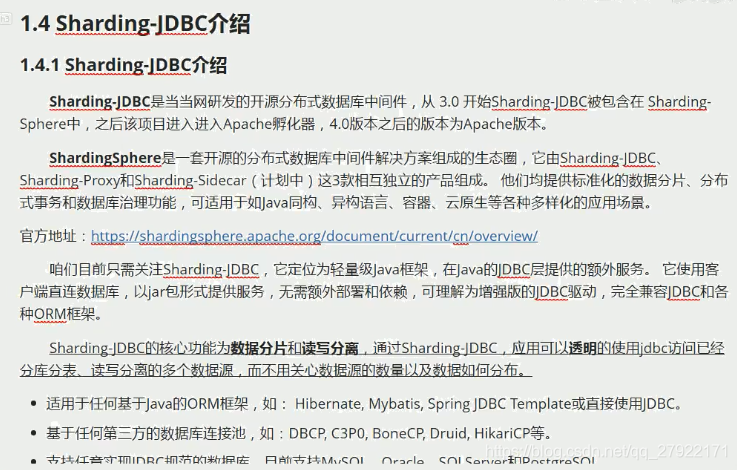
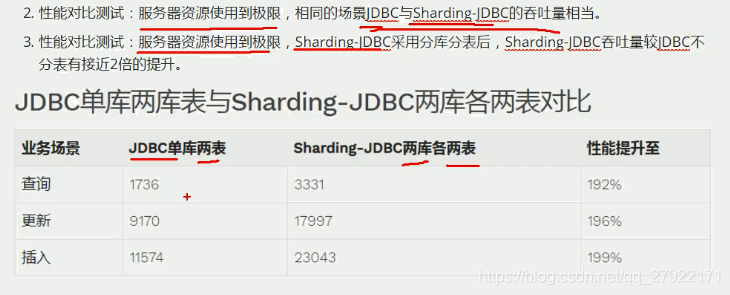

sharding-jdbc快速入门

server.port=56081
spring.application.name = sharding-jdbc-simple-demo
server.servlet.context-path = /sharding-jdbc-simple-demo
spring.http.encoding.enabled = true
spring.http.encoding.charset = UTF-8
spring.http.encoding.force = true
spring.main.allow-bean-definition-overriding = true
mybatis.configuration.map-underscore-to-camel-case = true
#sharding-jdbc分片规则配置
#数据源
spring.shardingsphere.datasource.names = m1 #给数据源起名字叫m1
spring.shardingsphere.datasource.m1.type = com.alibaba.druid.pool.DruidDataSource # 这里的m1 和上面起的数据源名字要一致
spring.shardingsphere.datasource.m1.driver-class-name = com.mysql.jdbc.Driver
spring.shardingsphere.datasource.m1.url = jdbc:mysql://localhost:3306/sharding_jdbc_order_db?useUnicode=true
spring.shardingsphere.datasource.m1.username = root
spring.shardingsphere.datasource.m1.password = 123456
# 指定t_order表的数据分布情况,配置数据节点 m1.t_order_1,m1.t_order_2
spring.shardingsphere.sharding.tables.t_order.actual-data-nodes = m1.t_order_$->{1..2}
# 指定t_order表的主键生成策略为SNOWFLAKE
spring.shardingsphere.sharding.tables.t_order.key-generator.column=order_id
spring.shardingsphere.sharding.tables.t_order.key-generator.type=SNOWFLAKE
# 指定t_order表的分片策略,分片策略包括分片键和分片算法
spring.shardingsphere.sharding.tables.t_order.table-strategy.inline.sharding-column = order_id #主键
spring.shardingsphere.sharding.tables.t_order.table-strategy.inline.algorithm-expression = t_order_$->{order_id % 2 + 1}
# 打开sql输出日志
spring.shardingsphere.props.sql.show = true
swagger.enable = true
logging.level.root = info
logging.level.org.springframework.web = info
logging.level.com.itheima.dbsharding = debug
logging.level.druid.sql = debug

利用sharding-jdbc其实程序发出的sql,其实会生成真实的sql,在数据库中执行
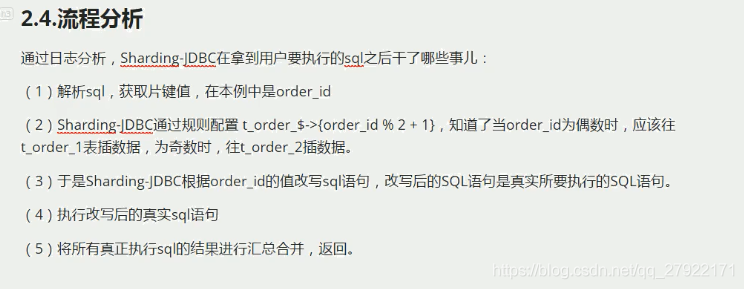



sql执行过程:

sql解析

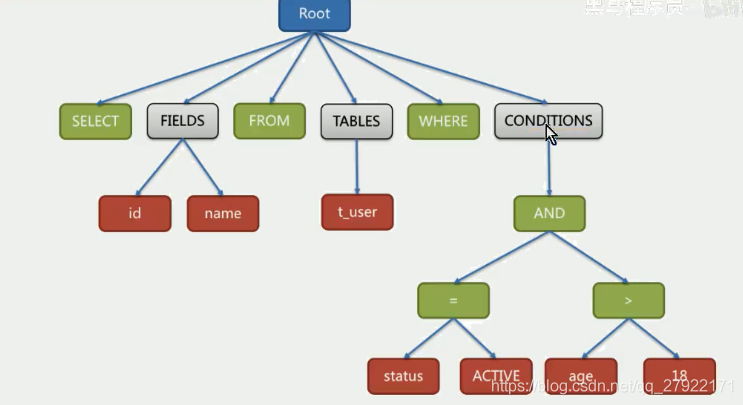
sql路由
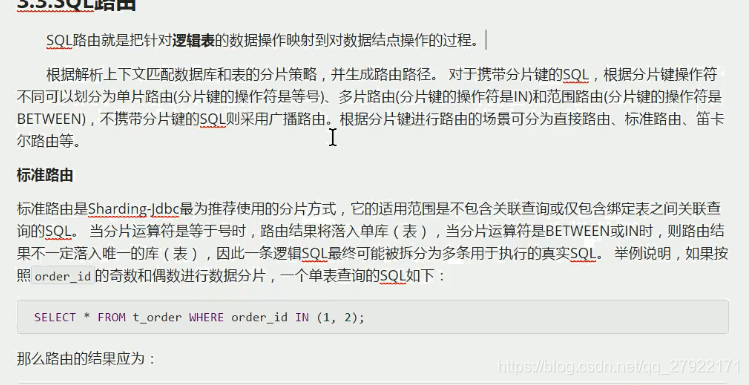
sql改写:
即将逻辑表改为真实的物理表


sql的执行:
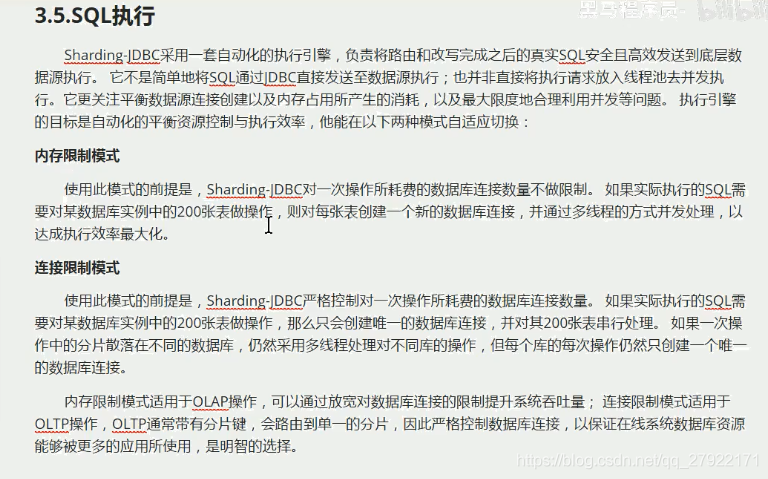

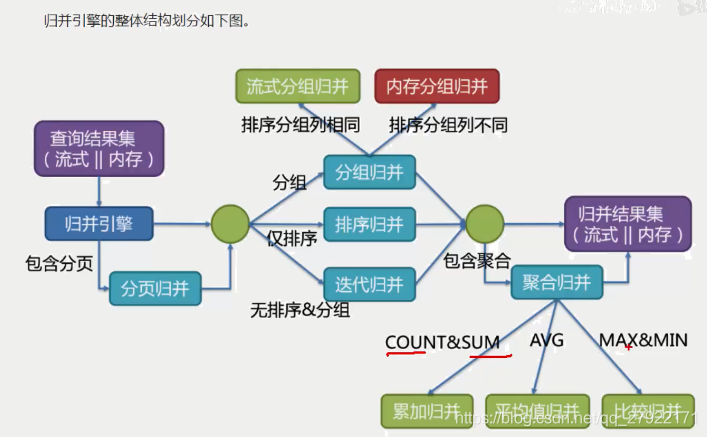
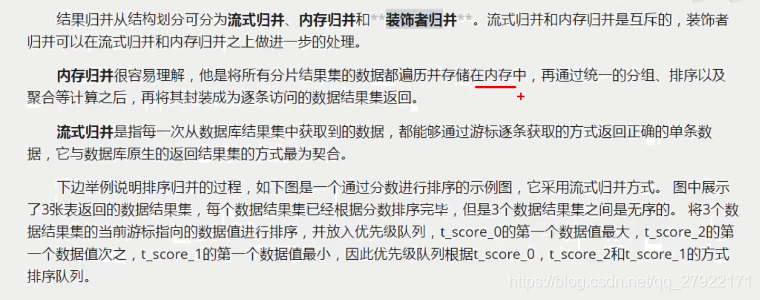


水平分库:


分片策略:我们一般用inline

# 定义多个数据源
spring.shardingsphere.datasource.names = m1,m2
spring.shardingsphere.datasource.m1.type = com.alibaba.druid.pool.DruidDataSource
spring.shardingsphere.datasource.m1.driver‐class‐name = com.mysql.jdbc.Driver
spring.shardingsphere.datasource.m1.url = jdbc:mysql://localhost:3306/sharding_jdbc_order_db_1?useUnicode=true
spring.shardingsphere.datasource.m1.username = root
spring.shardingsphere.datasource.m1.password = 123456
spring.shardingsphere.datasource.m2.type = com.alibaba.druid.pool.DruidDataSource
spring.shardingsphere.datasource.m2.driver‐class‐name = com.mysql.jdbc.Driver
spring.shardingsphere.datasource.m2.url = jdbc:mysql://localhost:3306/sharding_jdbc_order_db_2?useUnicode=true
spring.shardingsphere.datasource.m2.username = root
spring.shardingsphere.datasource.m2.password = 123456
...
# 分库策略,以user_id为分片键,分片策略为user_id % 2 + 1,user_id为偶数操作m1数据源,否则操作m2。
spring.shardingsphere.sharding.tables.t_order.database‐strategy.inline.sharding‐column = user_id
spring.shardingsphere.sharding.tables.t_order.database‐strategy.inline.algorithm‐expression =
m$‐>{user_id % 2 + 1}在sql中尽量要有分片键,如果没有会广播查询
垂直分库:
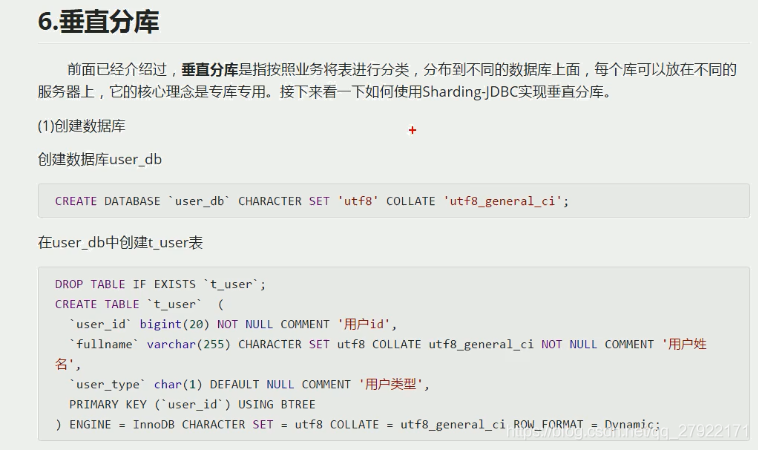
公共表:
对于公共表,我们在每一个数据节点都配置一份,sharding-jdbc可以帮助我们完成 对于所有节点 的公共表的修改,这样可以保证数据的一致性
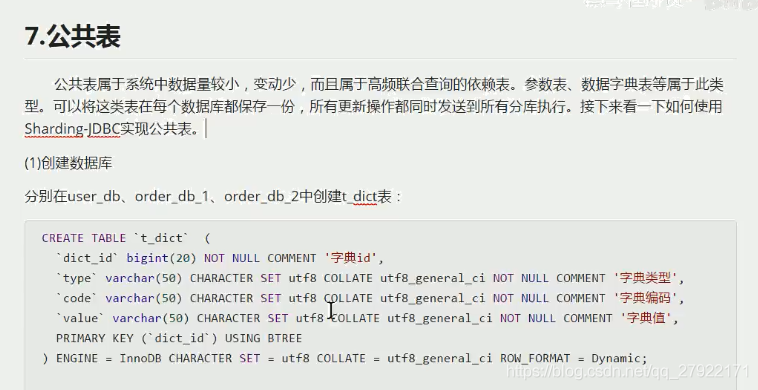

读写分离:
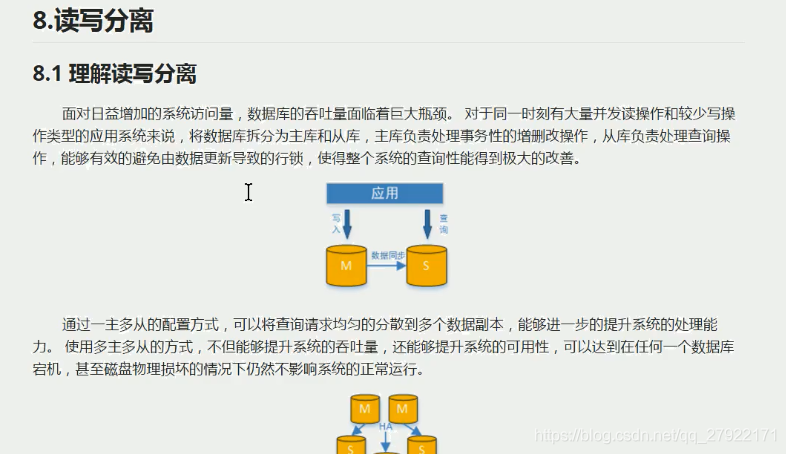
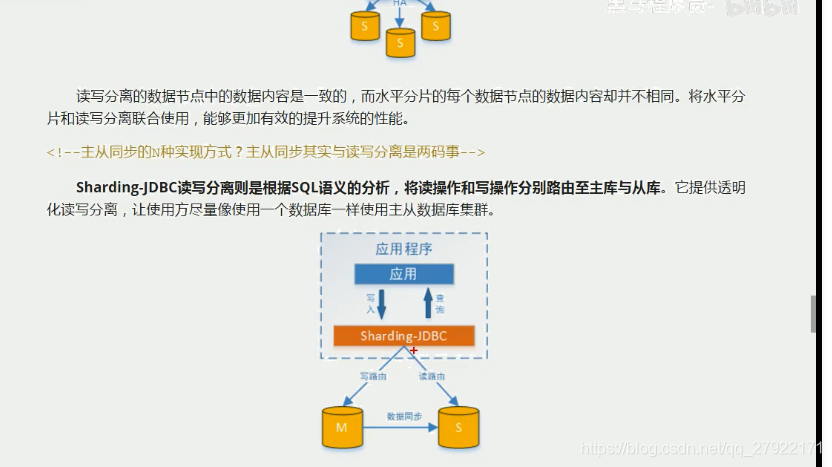
sharding-jdbc只负责数据库的路由不负责数据库的同步(mysql支持主从同步机制):
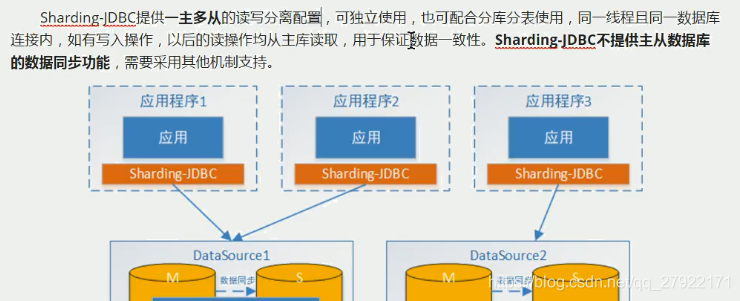
下面来实现mysql的主从同步:
利用mysql自己的主从同步机制:
具体操作
1.首先找到你的mysql安装目录:
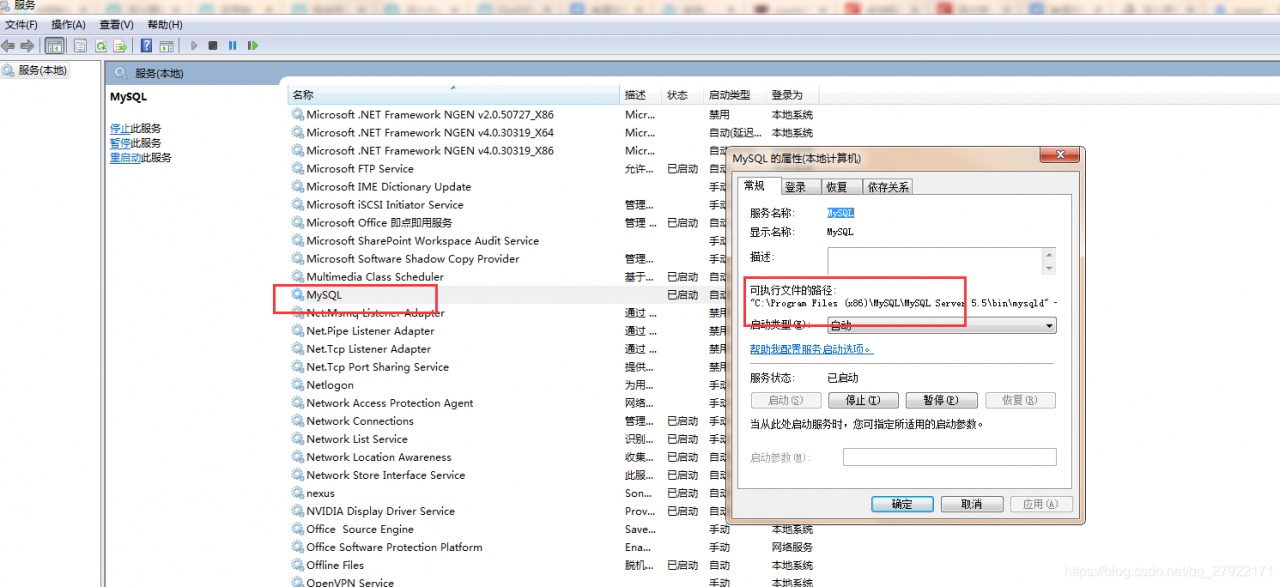
打开目录,然后直接复制整个目录
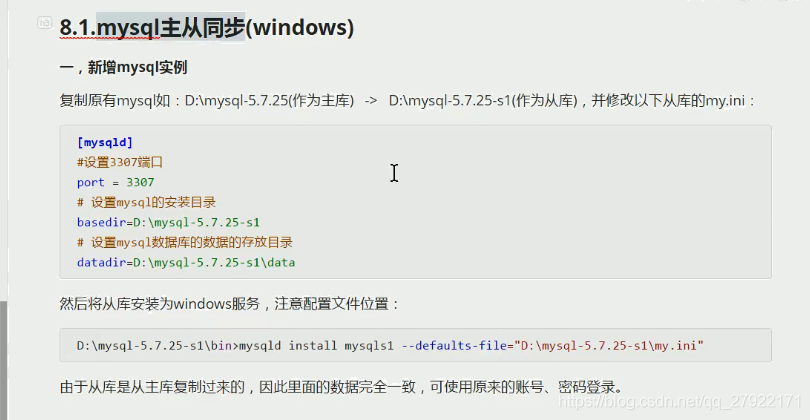

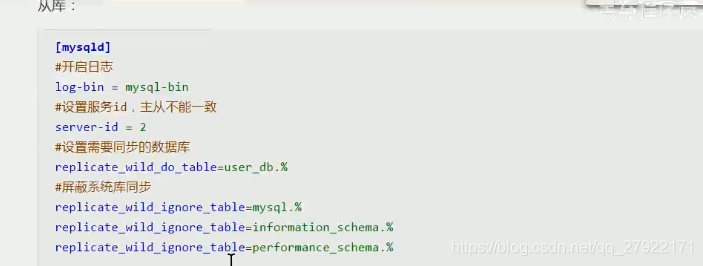
cmd命令启动服务

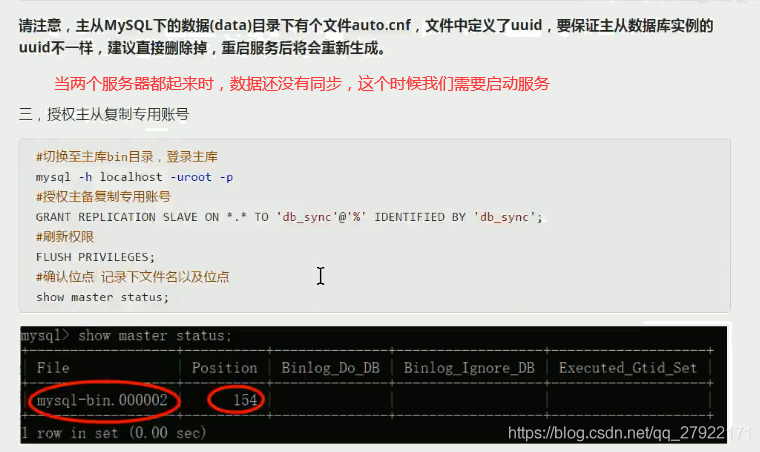
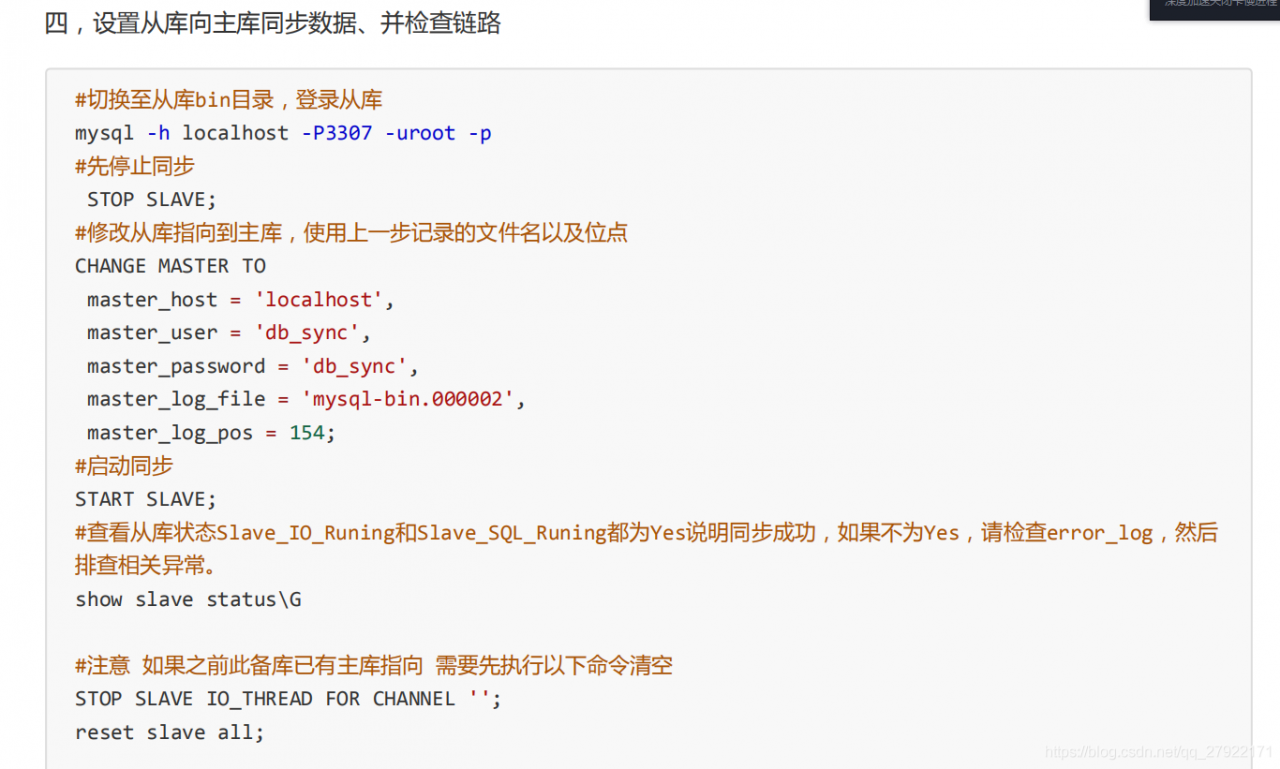
上面从步骤3开始 说的命令可以在cmd中执行,也可以在我们的连接工具中执行:
首先分别用工具连接上两个库
在主库中执行

然后会在mysql的user系统表中看到添加的用户

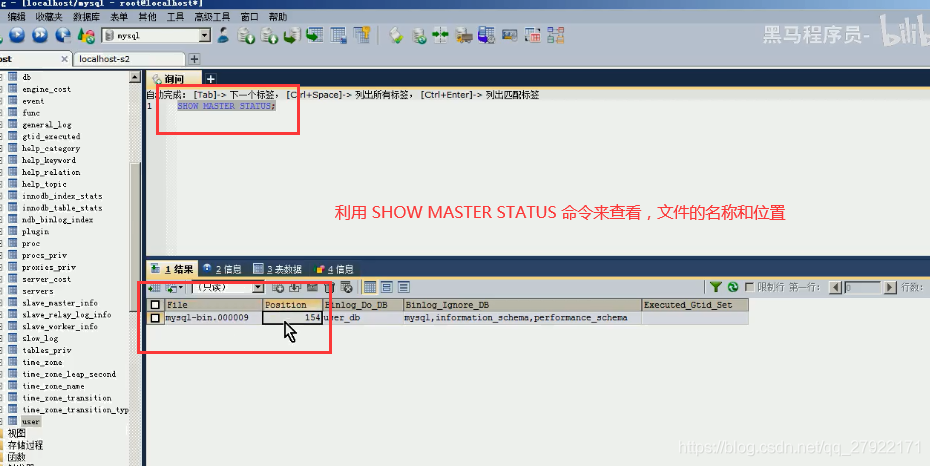
然后在从数据库中执行
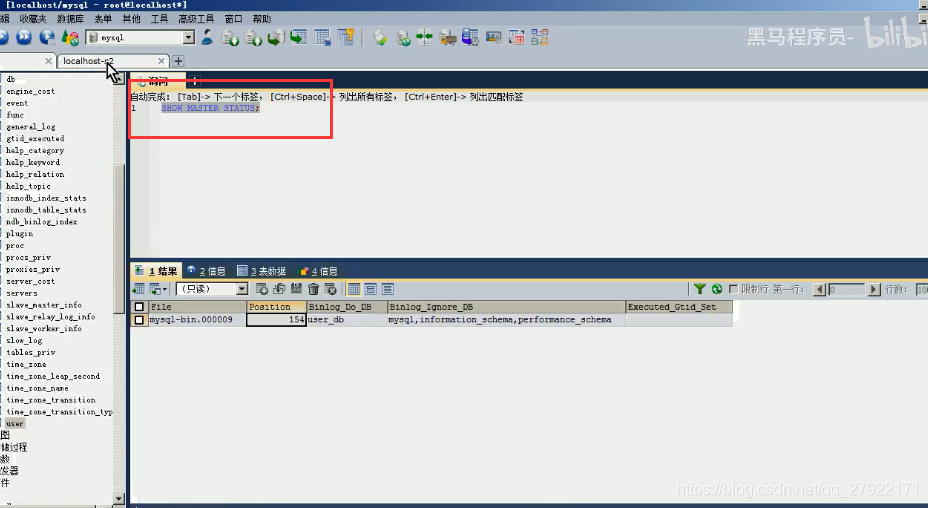

完成后用启动同步
![]()
启动后查看同步的结果

如果slave_IO_Running 和Slave_SQL_Running不是yes,我们需要

删除后我们就重新启动服务,会重新生成uuid
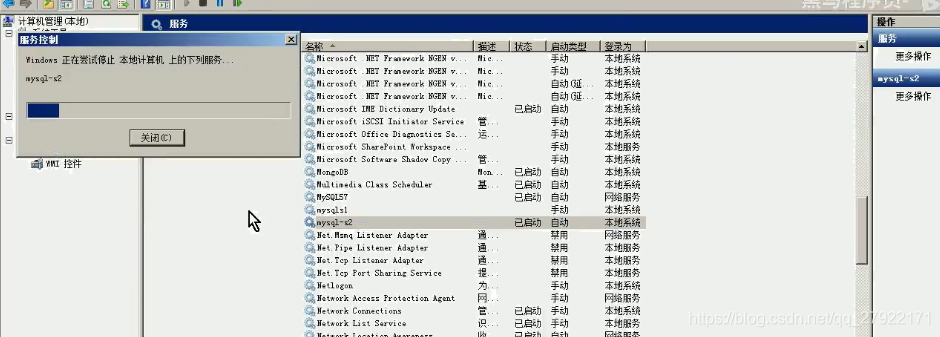
然后在分别执行stop slave 和start slave
然后在查看状态show slave status
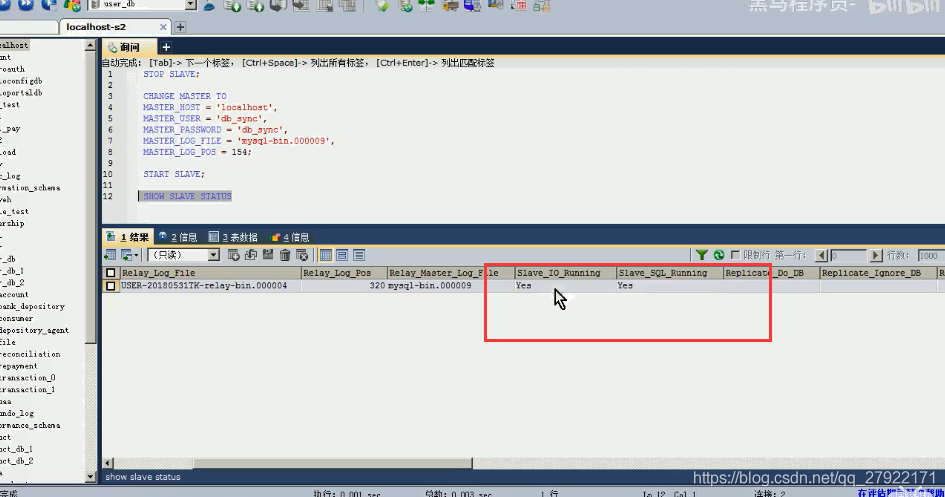
这个时候修改主库,然后就会发现从库中的数据也会发生变化
sharding-jdbc配置主从读写分离

垂直分库分表,读写分离,水平分表水平分库实战
表结构设计如下
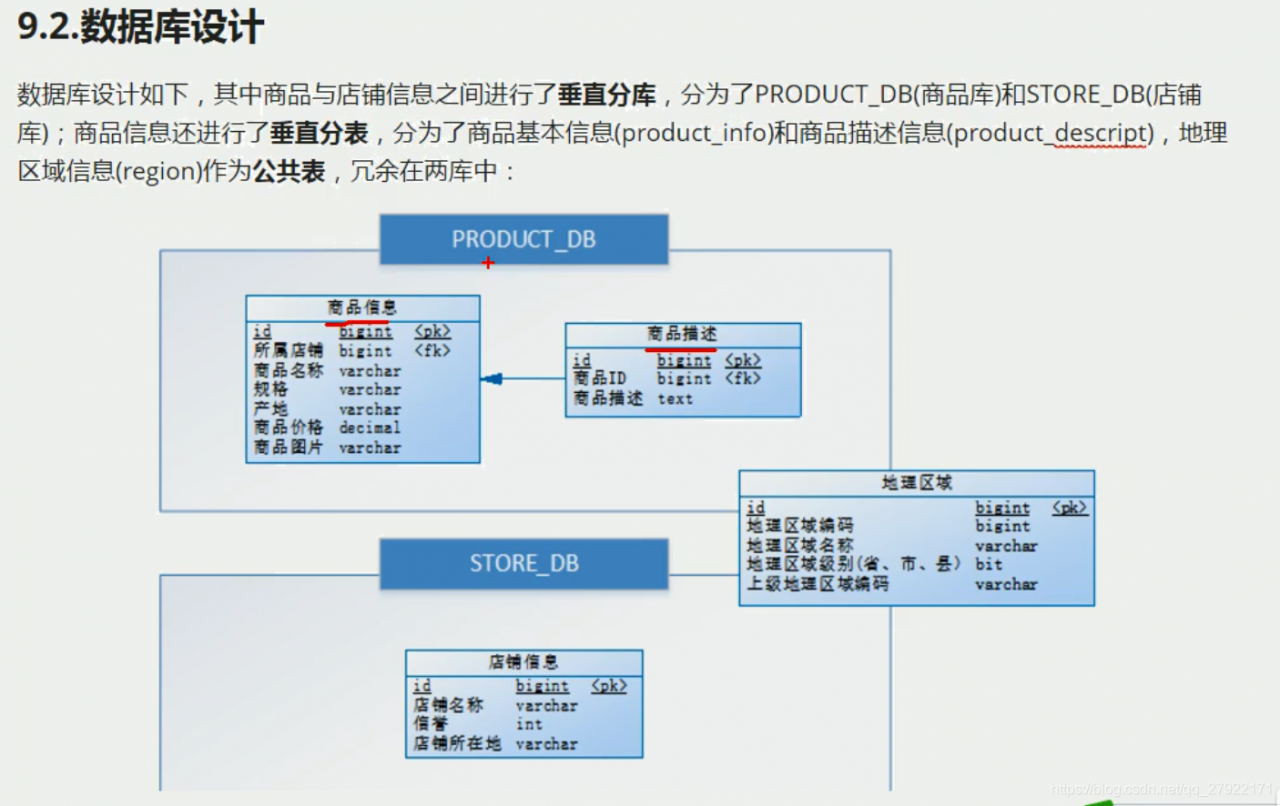
然后给每一个库配置读写分离



数据库初始化脚本:
 要在主库中执行
要在主库中执行
DROP TABLE IF EXISTS `region`;
CREATE TABLE `region` (
`id` bigint(20) NOT NULL COMMENT 'id',
`region_code` varchar(50) CHARACTER SET utf8 COLLATE utf8_general_ci NULL DEFAULT NULL COMMENT
'地理区域编码',
`region_name` varchar(100) CHARACTER SET utf8 COLLATE utf8_general_ci NULL DEFAULT NULL
COMMENT '地理区域名称',
`level` tinyint(1) NULL DEFAULT NULL COMMENT '地理区域级别(省、市、县)',
`parent_region_code` varchar(50) CHARACTER SET utf8 COLLATE utf8_general_ci NULL DEFAULT NULL
COMMENT '上级地理区域编码',
PRIMARY KEY (`id`) USING BTREE
) ENGINE = InnoDB CHARACTER SET = utf8 COLLATE = utf8_general_ci ROW_FORMAT = Dynamic;
INSERT INTO `region` VALUES (1, '110000', '北京', 0, NULL);
INSERT INTO `region` VALUES (2, '410000', '河南省', 0, NULL);
INSERT INTO `region` VALUES (3, '110100', '北京市', 1, '110000');
INSERT INTO `region` VALUES (4, '410100', '郑州市', 1, '410000');
DROP TABLE IF EXISTS `store_info`;
CREATE TABLE `store_info` (
`id` bigint(20) NOT NULL COMMENT 'id',
`store_name` varchar(100) CHARACTER SET utf8 COLLATE utf8_general_ci NULL DEFAULT NULL COMMENT
'店铺名称',
`reputation` int(11) NULL DEFAULT NULL COMMENT '信誉等级',
`region_code` varchar(50) CHARACTER SET utf8 COLLATE utf8_general_ci NULL DEFAULT NULL COMMENT
'店铺所在地',
PRIMARY KEY (`id`) USING BTREE
) ENGINE = InnoDB CHARACTER SET = utf8 COLLATE = utf8_general_ci ROW_FORMAT = Dynamic;
INSERT INTO `store_info` VALUES (1, 'XX零食店', 4, '110100');
INSERT INTO `store_info` VALUES (2, 'XX饮品店', 3, '410100');
![]()
DROP TABLE IF EXISTS `product_descript_1`;
CREATE TABLE `product_descript_1` (
`id` bigint(20) NOT NULL COMMENT 'id',
`product_info_id` bigint(20) NULL DEFAULT NULL COMMENT '所属商品id',
`descript` longtext CHARACTER SET utf8 COLLATE utf8_general_ci NULL COMMENT '商品描述',
`store_info_id` bigint(20) NULL DEFAULT NULL COMMENT '所属店铺id',
PRIMARY KEY (`id`) USING BTREE,
INDEX `FK_Reference_2`(`product_info_id`) USING BTREE
) ENGINE = InnoDB CHARACTER SET = utf8 COLLATE = utf8_general_ci ROW_FORMAT = Dynamic;
DROP TABLE IF EXISTS `product_descript_2`;
CREATE TABLE `product_descript_2` (
`id` bigint(20) NOT NULL COMMENT 'id',
`product_info_id` bigint(20) NULL DEFAULT NULL COMMENT '所属商品id',
`descript` longtext CHARACTER SET utf8 COLLATE utf8_general_ci NULL COMMENT '商品描述',
`store_info_id` bigint(20) NULL DEFAULT NULL COMMENT '所属店铺id',
PRIMARY KEY (`id`) USING BTREE,
INDEX `FK_Reference_2`(`product_info_id`) USING BTREE
) ENGINE = InnoDB CHARACTER SET = utf8 COLLATE = utf8_general_ci ROW_FORMAT = Dynamic;
DROP TABLE IF EXISTS `product_info_1`;
CREATE TABLE `product_info_1` (
`product_info_id` bigint(20) NOT NULL COMMENT 'id',
`store_info_id` bigint(20) NULL DEFAULT NULL COMMENT '所属店铺id',
`product_name` varchar(100) CHARACTER SET utf8 COLLATE utf8_general_ci NULL DEFAULT NULL
COMMENT '商品名称',
`spec` varchar(50) CHARACTER SET utf8 COLLATE utf8_general_ci NULL DEFAULT NULL COMMENT '规
格',
`region_code` varchar(50) CHARACTER SET utf8 COLLATE utf8_general_ci NULL DEFAULT NULL COMMENT
'产地',
`price` decimal(10, 0) NULL DEFAULT NULL COMMENT '商品价格',
`image_url` varchar(100) CHARACTER SET utf8 COLLATE utf8_general_ci NULL DEFAULT NULL COMMENT
'商品图片',
PRIMARY KEY (`product_info_id`) USING BTREE,
INDEX `FK_Reference_1`(`store_info_id`) USING BTREE
) ENGINE = InnoDB CHARACTER SET = utf8 COLLATE = utf8_general_ci ROW_FORMAT = Dynamic;
DROP TABLE IF EXISTS `product_info_2`;
CREATE TABLE `product_info_2` (
`product_info_id` bigint(20) NOT NULL COMMENT 'id',
`store_info_id` bigint(20) NULL DEFAULT NULL COMMENT '所属店铺id',
`product_name` varchar(100) CHARACTER SET utf8 COLLATE utf8_general_ci NULL DEFAULT NULL
COMMENT '商品名称',
`spec` varchar(50) CHARACTER SET utf8 COLLATE utf8_general_ci NULL DEFAULT NULL COMMENT '规
格',
`region_code` varchar(50) CHARACTER SET utf8 COLLATE utf8_general_ci NULL DEFAULT NULL COMMENT
'产地',
`price` decimal(10, 0) NULL DEFAULT NULL COMMENT '商品价格',
`image_url` varchar(100) CHARACTER SET utf8 COLLATE utf8_general_ci NULL DEFAULT NULL COMMENT
'商品图片',
PRIMARY KEY (`product_info_id`) USING BTREE,
INDEX `FK_Reference_1`(`store_info_id`) USING BTREE
) ENGINE = InnoDB CHARACTER SET = utf8 COLLATE = utf8_general_ci ROW_FORMAT = Dynamic;
DROP TABLE IF EXISTS `region`;
CREATE TABLE `region` (
`id` bigint(20) NOT NULL COMMENT 'id',
`region_code` varchar(50) CHARACTER SET utf8 COLLATE utf8_general_ci NULL DEFAULT NULL COMMENT
'地理区域编码',
`region_name` varchar(100) CHARACTER SET utf8 COLLATE utf8_general_ci NULL DEFAULT NULL
COMMENT '地理区域名称',
`level` tinyint(1) NULL DEFAULT NULL COMMENT '地理区域级别(省、市、县)',
`parent_region_code` varchar(50) CHARACTER SET utf8 COLLATE utf8_general_ci NULL DEFAULT NULL
COMMENT '上级地理区域编码',
PRIMARY KEY (`id`) USING BTREE
) ENGINE = InnoDB CHARACTER SET = utf8 COLLATE = utf8_general_ci ROW_FORMAT = Dynamic;
INSERT INTO `region` VALUES (1, '110000', '北京', 0, NULL);
INSERT INTO `region` VALUES (2, '410000', '河南省', 0, NULL);
INSERT INTO `region` VALUES (3, '110100', '北京市', 1, '110000');
INSERT INTO `region` VALUES (4, '410100', '郑州市', 1, '410000');
数据源配置

spring.shardingsphere.datasource.m0.type = com.alibaba.druid.pool.DruidDataSource
spring.shardingsphere.datasource.m0.driver-class-name = com.mysql.jdbc.Driver
spring.shardingsphere.datasource.m0.url = jdbc:mysql://localhost:3306/store_db?useUnicode=true
spring.shardingsphere.datasource.m0.username = root
spring.shardingsphere.datasource.m0.password = mysql
spring.shardingsphere.datasource.m1.type = com.alibaba.druid.pool.DruidDataSource
spring.shardingsphere.datasource.m1.driver-class-name = com.mysql.jdbc.Driver
spring.shardingsphere.datasource.m1.url = jdbc:mysql://localhost:3306/product_db_1?useUnicode=true
spring.shardingsphere.datasource.m1.username = root
spring.shardingsphere.datasource.m1.password = mysql
spring.shardingsphere.datasource.m2.type = com.alibaba.druid.pool.DruidDataSource
spring.shardingsphere.datasource.m2.driver-class-name = com.mysql.jdbc.Driver
spring.shardingsphere.datasource.m2.url = jdbc:mysql://localhost:3306/product_db_2?useUnicode=true
spring.shardingsphere.datasource.m2.username = root
spring.shardingsphere.datasource.m2.password = mysql
spring.shardingsphere.datasource.s0.type = com.alibaba.druid.pool.DruidDataSource
spring.shardingsphere.datasource.s0.driver-class-name = com.mysql.jdbc.Driver
spring.shardingsphere.datasource.s0.url = jdbc:mysql://localhost:3307/store_db?useUnicode=true
spring.shardingsphere.datasource.s0.username = root
spring.shardingsphere.datasource.s0.password = mysql
spring.shardingsphere.datasource.s1.type = com.alibaba.druid.pool.DruidDataSource
spring.shardingsphere.datasource.s1.driver-class-name = com.mysql.jdbc.Driver
spring.shardingsphere.datasource.s1.url = jdbc:mysql://localhost:3307/product_db_1?useUnicode=true
spring.shardingsphere.datasource.s1.username = root
spring.shardingsphere.datasource.s1.password = mysql
spring.shardingsphere.datasource.s2.type = com.alibaba.druid.pool.DruidDataSource
spring.shardingsphere.datasource.s2.driver-class-name = com.mysql.jdbc.Driver
spring.shardingsphere.datasource.s2.url = jdbc:mysql://localhost:3307/product_db_2?useUnicode=true
spring.shardingsphere.datasource.s2.username = root
spring.shardingsphere.datasource.s2.password = mysql数据源名称
![]()
spring.shardingsphere.datasource.names = m0,m1,m2,s0,s1,s2#主从关系
spring.shardingsphere.sharding.master-slave-rules.ds0.master-data-source-name=m0
spring.shardingsphere.sharding.master-slave-rules.ds0.slave-data-source-names=s0
spring.shardingsphere.sharding.master-slave-rules.ds1.master-data-source-name=m1
spring.shardingsphere.sharding.master-slave-rules.ds1.slave-data-source-names=s1
spring.shardingsphere.sharding.master-slave-rules.ds2.master-data-source-name=m2
spring.shardingsphere.sharding.master-slave-rules.ds2.slave-data-source-names=s2配置store_info 表:我们没有水平分库,所以配置节点只有ds0,没有水平分表所以 直接就一个表即store_info,
# store_info分表策略,固定分配至ds0的store_info真实表,
spring.shardingsphere.sharding.tables.store_info.actual‐data‐nodes = ds$‐>{0}.store_info
spring.shardingsphere.sharding.tables.store_info.table‐strategy.inline.sharding‐column = id
spring.shardingsphere.sharding.tables.store_info.table‐strategy.inline.algorithm‐expression =
store_info由于product_info和product_descript因为水平分库所以配置水平分库的策略
spring.shardingsphere.sharding.default-database-strategy.inline.sharding-column = store_info_id
spring.shardingsphere.sharding.default-database-strategy.inline.algorithm-expression = ds$->{store_info_id % 2 + 1}配置product_info 的水平分表策略:
#数据存放在哪些节点上,ds1和ds2两个数据库,并且每个数据库中的product_info_1 和product_info_2两张表
spring.shardingsphere.sharding.tables.product_info.actual-data-nodes = ds$->{1..2}.product_info_$->{1..2}
#分片键
spring.shardingsphere.sharding.tables.product_info.table-strategy.inline.sharding-column = product_info_id
#分片策略,根据分片键设置数据放入水平分表的策略
spring.shardingsphere.sharding.tables.product_info.table-strategy.inline.algorithm-expression = product_info_$->{product_info_id%2+1}
#水平分表,id是用雪花算法,所以配置对应的主键即分片键的生成策略
spring.shardingsphere.sharding.tables.product_info.key-generator.column=product_info_id
spring.shardingsphere.sharding.tables.product_info.key-generator.type=SNOWFLAKE配置product_descript的水平分表
#product_descript分表策略
spring.shardingsphere.sharding.tables.product_descript.actual-data-nodes = ds$->{1..2}.product_descript_$->{1..2}
spring.shardingsphere.sharding.tables.product_descript.table-strategy.inline.sharding-column = product_info_id
spring.shardingsphere.sharding.tables.product_descript.table-strategy.inline.algorithm-expression = product_descript_$->{product_info_id % 2 + 1}
spring.shardingsphere.sharding.tables.product_descript.key-generator.column=id
spring.shardingsphere.sharding.tables.product_descript.key-generator.type=SNOWFLAKE因为product_info 和product_descript是垂直拆分,所以我们需要绑定表:
# 设置product_info,product_descript为绑定表
spring.shardingsphere.sharding.binding-tables[0] = product_info,product_descript配置region是广播表
# 设置region为广播表(公共表),每次更新操作会发送至所有数据源
spring.shardingsphere.sharding.broadcast-tables=region